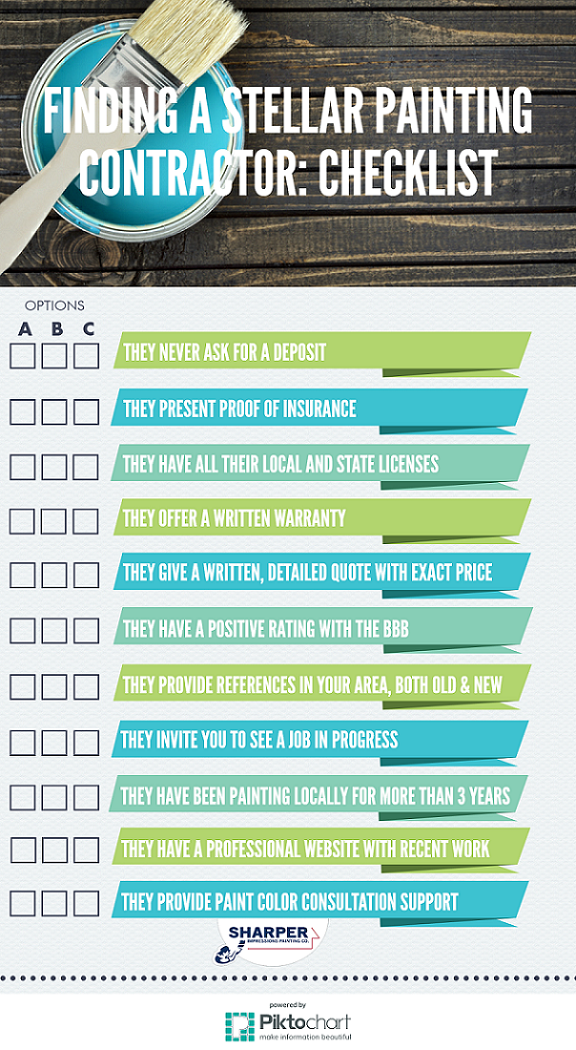Comparing Interior And Exterior Paint: Major Differences And Their Makes Use Of
Comparing Interior And Exterior Paint: Major Differences And Their Makes Use Of
Blog Article
Material Produce By-Reimer Meyers
When you're selecting in between interior and exterior paint, it's important to understand their essential distinctions that affect both efficiency and visual appeals. Interior paints are crafted for lower VOC degrees and smoother finishes, making them perfect for indoor areas, while outside paints are made to endure harsh weather and UV direct exposure. Each kind serves a distinct objective, however understanding when to utilize one over the other can greatly influence your task's result. So, what siding painting company minneapolis should you consider when making your option?
Composition and Formula
When selecting in between interior and exterior paint, understanding their structure and solution is crucial. Inside paints normally include a reduced quantity of unstable organic compounds (VOCs), making them more secure for indoor air quality. You'll see they typically have a smoother surface, which boosts their capacity to withstand spots and allows for less complicated cleansing. They're made to hold up against the roughness of interior settings, including varying moisture degrees and temperature level fluctuations.
On the other hand, outside paints are created to endure harsher conditions. They typically include higher degrees of pigments and ingredients to withstand fading from UV rays, along with to stop mold and mold and mildew growth. Their structure includes a lot more binders and materials, which provide far better attachment to surfaces revealed to the components. This makes sure the paint can hold up against rain, snow, and varying temperatures without peeling or breaking.
Efficiency and Longevity
Evaluating performance and durability is important when selecting between exterior and interior paint. Interior paint is designed for surfaces that experience much less damage. It usually withstands fading and scuffing, making it optimal for living areas and bedrooms. However, it might not hold up well in high-moisture locations like bathroom and kitchens without proper formula.
On exterior house color consultant , exterior paint encounters harsher problems. It's crafted to withstand UV rays, rainfall, and temperature level variations. This type of paint commonly contains ingredients that stop mold and mildew and mold development, ensuring long life in various environments. When you utilize external paint, you can expect it to last numerous years longer than interior paint, supplied it's used correctly.
Another vital distinction depends on the coating options. Inside paints commonly have a range of finishes for visual allure, while outside paints focus on resilience over sheen. If you're searching for something that can deal with the aspects, outside paint is your best bet.
On the other hand, if you're focused on interior appearances with less problem for severe problems, interior paint may be suitable. Ultimately, your choice ought to line up with the specific needs of the atmosphere.
Aesthetic Considerations
A fresh layer of paint can change a room, however visual factors to consider play an essential duty in your option in between interior and exterior alternatives. When you're selecting paint, think about the mood you want to produce. Interior paint enables you to discover a wider variety of shades and surfaces, enabling you to reveal your personal design and improve your home's setting. Whether you select soft pastels or strong tones, the ideal interior paint can make your rooms feel comfortable, dynamic, or tranquil.
On the other hand, outside paint needs to align with your home's architecture and the surrounding atmosphere. Here, you're not simply making a style statement; you're also taking into consideration curb allure. Picking shades that integrate with your area can improve your home's worth and aesthetic appeal. Bear in mind that exterior paint is likewise based on fading and climate changes, so choosing a classic color can conserve you from constant repainting.
Inevitably, think about just how each alternative fits your vision. By aligning your paint option with your wanted aesthetic, you can produce rooms that mirror your character while keeping performance.
Conclusion
When it comes to selecting paint, comprehending the vital differences between interior and exterior choices is vital. Interior paints concentrate on aesthetics and reduced VOCs, making them best for enhancing your interior spaces. In contrast, outside paints are made for resilience and weather condition resistance, shielding your home from the elements. By considering your certain requirements and the setting, you can confidently choose the appropriate paint to achieve the look and longevity you desire for your room.
